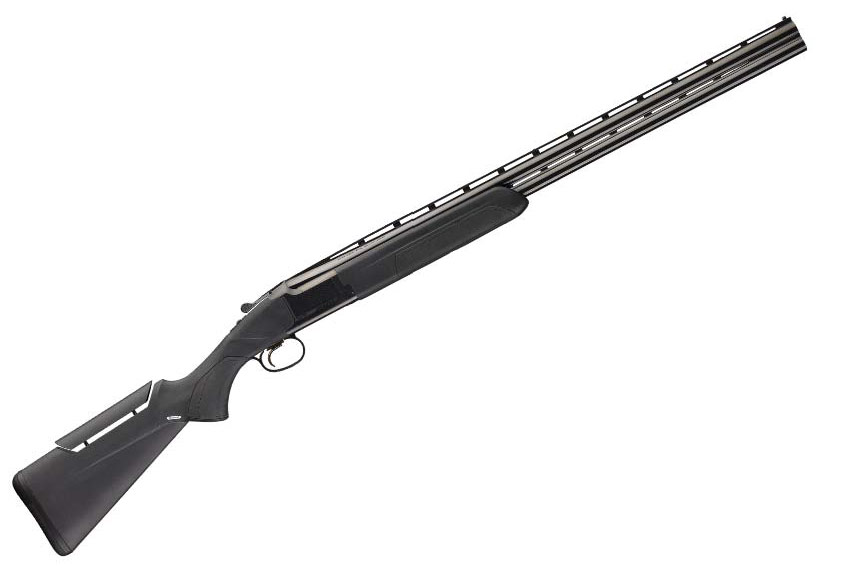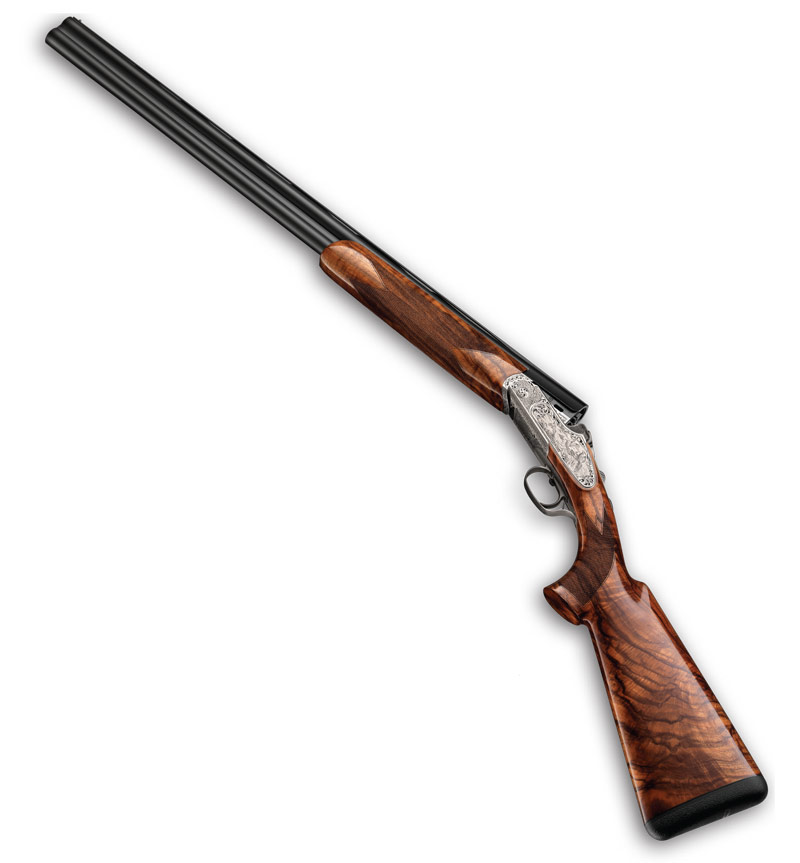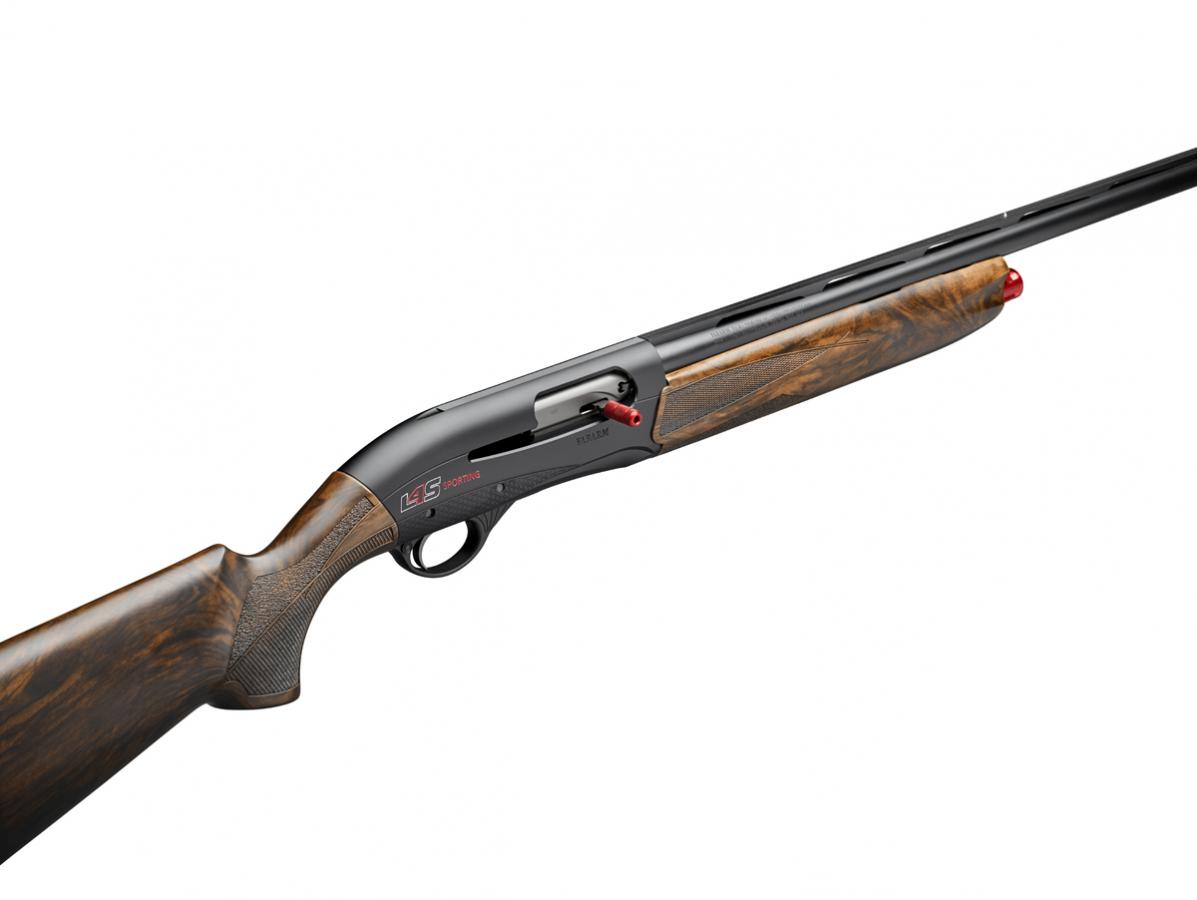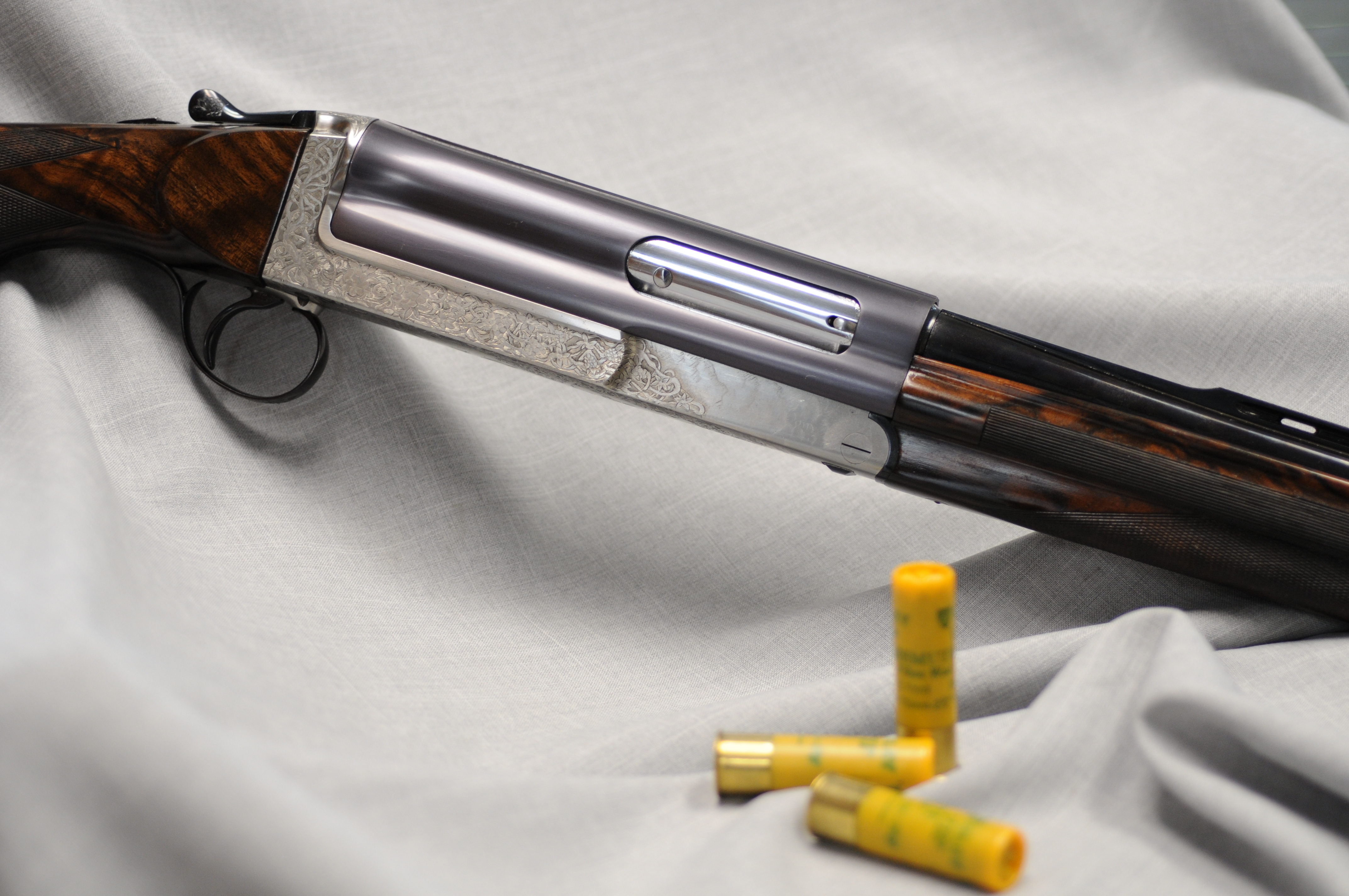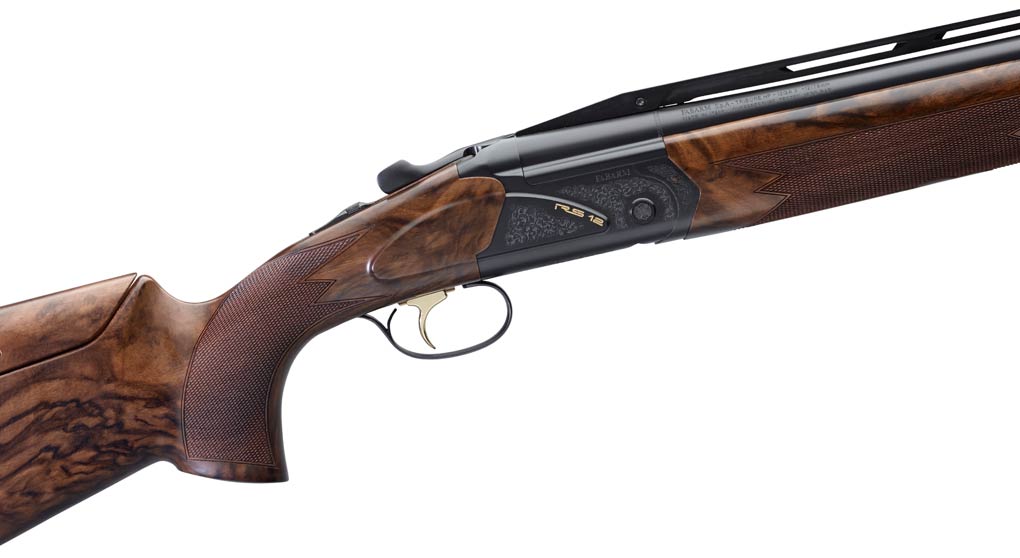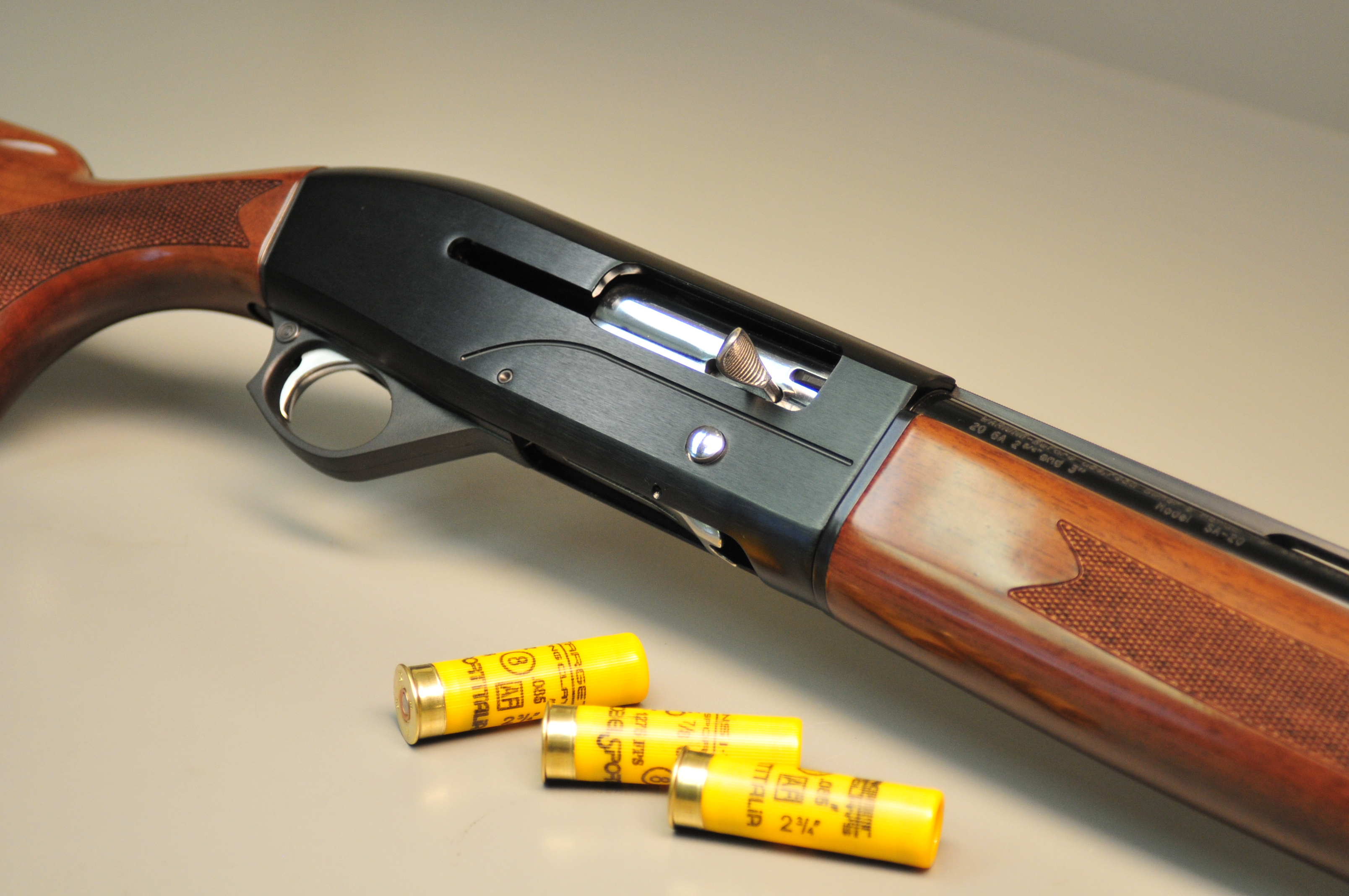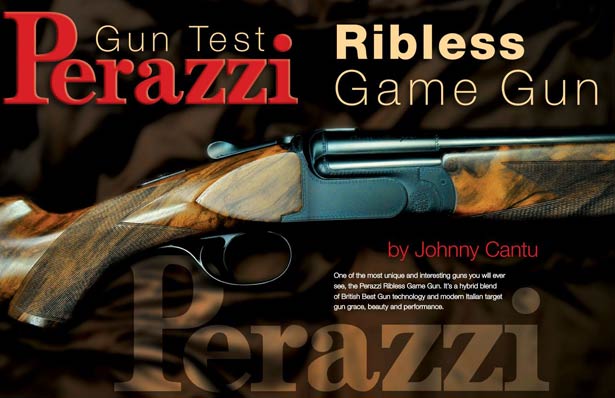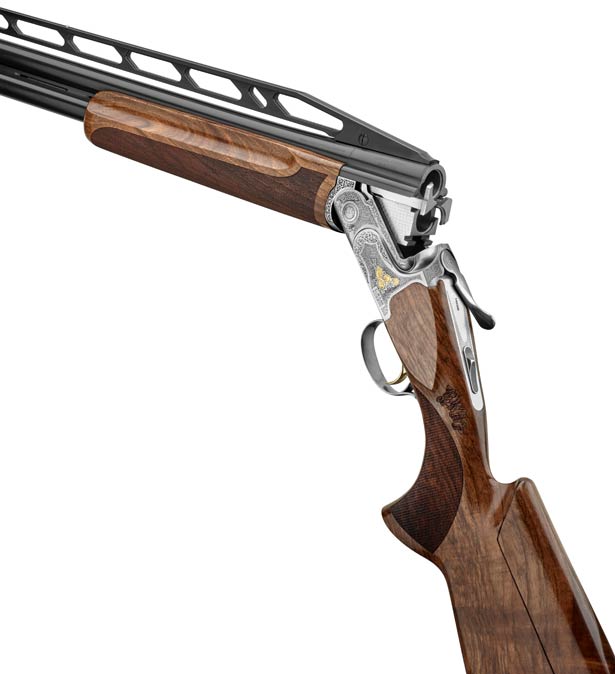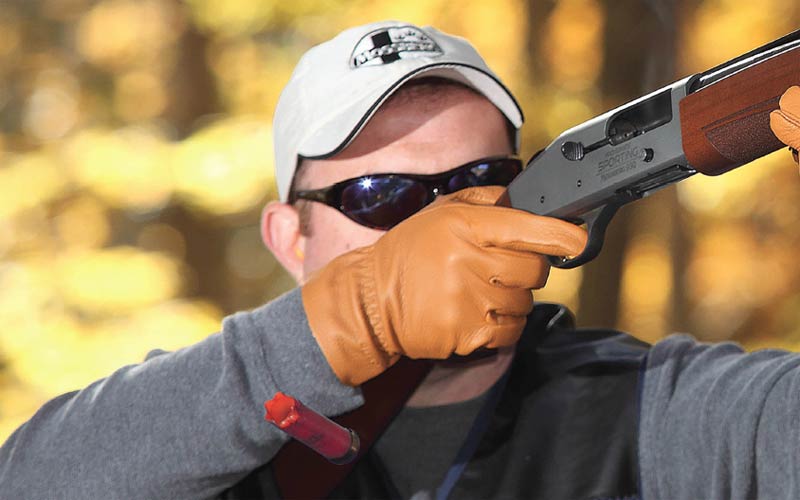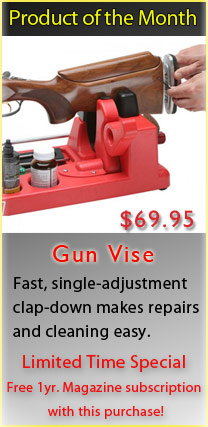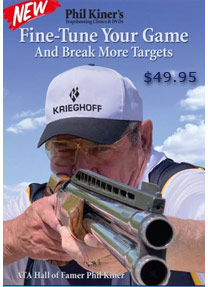In 2023, the Browning Citori celebrated its 50th birthday. The Browning Citori was introduced in 1973 as a more affordable version of the highly successful Browning Superposed. Since 1973 the Browning Citori has been extremely successful for Browning — far surpassing the company’s initial expectations of this model.
Gun Test
When the Super Black Eagle III by Benelli came out in a special turkey configuration, I thought, “Just another high-priced scattergun that would do about as well as several dozen others.”
However, my mind changed when I was selected to field test this gun and write my opinions on the special SBE III by the famous Italian gunmaker.
Because the SBE III uses the time-proven Inertia Drive System®, the shotgun requires less attention given to it when cleaning. This is because there are less components in the system. The major components are simply the bolt body, the inertia spring and the rotating bolt head. Less parts also means less lubrication needed as well. The Inertia Drive System® is touted as producing less recoil also. But when I began firing 3.5″ shells through this fairly lightweight 12-gauge semi-auto, I was more than just a little skeptical about that claim of less recoil.
In 2004 the competition clay target aficionados of the U.S. began seeing a new kid on the block in the form of a new, low profile over/under from a German company previously known for its high-performance rifles. Blaser of Isny, Germany, began to export their innovative over/under shotgun known as the F3.
From those first years in the American market, the F3 has sculpted a comfortable niche for itself. It did so by means of its many unique features, which include the previously mentioned low-profile receiver (only 60.3mm tall), uber-powered ejectors, ultra-fast lock time, inline hammers, glass-like sears and, the most desired feature of all, a totally modular system among the major components. That is to say, the barrel, receiver, stock and forend will interchange with those same components on other F3s. This interchangeability is unique among shotgun designs. There is no need to have barrels hand-fitted and married to any particular receiver. One barrel can easily swap to another F3 receiver with perfect functioning. The ease with which the barrels can be swapped off one F3 and quickly and positively installed onto a different F3 receiver is not only a masterstroke of engineering, it is major cool, too.
Like a lot of shooters who participate in the clay target games, I will often shoot with over/unders some days and semi-auto shotguns other days. I thoroughly enjoy shooting my over/unders. They fit me well, are comfortable to shoot (primarily because they do fit me), are attractive and, admittedly, there is a level of pride I feel when shooting an over/under. But, if I had to be brutally honest, and someone asked me which design I shoot better, I would have to say the semi-autos. Why is that?
I have thought about this and would tell you softer recoil is one reason. My over/unders fit me quite well and they do shoot with a level of recoil I do not object to, given the loads I generally use, which are one-ounce loads. But the semi-autos are hard to beat in the recoil department. Also, there is a different feel of control to the bird I appreciate when shooting a semi-automatic that I do not feel with the O/U. I am not sure exactly how to describe it. The best description I can come up with is more confidence in the move I am making onto the bird. The semi-auto just seems to give me a stronger sense of surety. Recently I tested a new model, the L4S Sporting from the Italian gunmaker, Fabarm, that gave me that same feeling of certainty on the target I normally only feel when shooting my personal semi-automatic guns.
How much would you pay for a good semi-automatic shotgun? $500, $1,000, $1,500, $2,000?
Would you pay $17,000 for a no-frills, plain, standard-grade semi-auto? Most people probably would not. But then, the brand of semi-automatic shotgun I am talking about is not your average brand with a familiar name you can purchase almost any day of the week from your local sporting goods store. Nor does the company producing this brand of semi-automatic shotgun spit them out every few minutes off a production line. No, sir. Each one of these shotguns requires a minimum of 400 hours to produce with all parts being hand-polished and hand-fitted.
An interesting point about the design of this semi-automatic, not a single screw is found anywhere among the more than 100 parts of the working internal mechanism.
At the recent 2017 SHOT Show, Fabarm, the Italian gunmaker known for their unique flair in the design and appearance of their firearms, debuted a new model over/under shotgun that is gathering considerable attention. Officially, the full moniker of this new model is the Fabarm Axis Allsport QRR (Quick Release Rib). However, for the sake of saving ink, in this review we will call it the Axis Allsport.
“Allsport” sounds like there just might be a not-so-hidden meaning there, right? You got it! This beauty of an over/under is designed to perform admirably in more than one clay target discipline. Trap, skeet and sporting clays enthusiasts, like collegiate shooters and the youngsters in high school coming up through the ranks, often have a tough time coming up with the necessary funds for just one dedicated clay target shotgun, never mind three dedicated clay target smoothbores. Wouldn’t it be nice to have one gun to take care of all your shooting needs?
Probably the one question I have been asked more than any other has to do with what design and gauge of shotgun I would recommend when trying to get someone started in shotgun shooting, in particular, a young person with little or no experience in shotgunning. Better than 80% of the time, my suggestion is a soft-shooting, semi-automatic in 20 gauge. The rest of that response normally includes the names of Beretta, Winchester, Remington or Benelli as the gunmakers who can help you along your way if you follow my suggestion. Well, from now on there will be another name included in that group — the name, Mossberg.
O.F. Mossberg & Sons have been producing quality firearms for the American market since 1919. What began in a tiny rented loft in New Haven, Connecticut, on State Street eventually grew to a company with over 400 employees, a manufacturing facility of nearly 160,000 square feet and grossing roughly 26 million dollars in total annual sales in markets around the globe. Quite the American success story.
While attending the NSCA Nationals in San Antonio, Texas, in October of last year, I took a few moments to visit the Perazzi building. I was greeted by Perazzi USA’s Managing Director, Al Kondak. We spoke for a few moments, and I asked what new item he might have we could review. He took but a moment to consider his choices. Then Al showed me what I thought was a unique looking over/under. I held it in my hands for a better look and something about it just looked a bit…off. Aha! There was no ventilated rib atop the barrels. Hmm. What’s the deal?
Al told me it was a Perazzi Ribless Game Gun (PRGG). I thought to myself, “Why would you want an over/under, field or target model for that matter, without a rib?” Since that time, I have learned the ribless game gun concept has actually been around for quite some time.
Syren, a division of Caesar Guerini, the Italian gunmaking firm, continues in its production of over/under shotguns designed specifically for women. The latest model in the line of Syren offerings is aimed to attract the female trap enthusiast, the Syren Tempio Trap Combo.
First introduced to the American market at the 2014 SHOT Show, the Syren line of over/under shotguns were the first in the market to be designed specifically for the female shooter. The inaugural models were designed for sporting clays and field hunting. Dimensions of the buttstock, as well as balance and weight, were the primary features that placed Syren at the head of the class.
It’s obvious the stock dimensions for a woman must be different for lady shooters than what would generally accommodate a male shooter. The most obvious dimension needing modification is length-of-pull. However, Syren designs their shotgun with considerably more detail with regard to the feminine clay target shooter. More pitch, more cast and a smaller grip are some of the dimensions that help the Syren shotguns provide a better fit for the female shooter. In this review of the Syren Tempio Trap Combo, I will describe the features and benefits of this high-performance, target-breaking shotgun.
In November of last year I was invited to be a participant in a writer’s camp in Houston, Texas, for the launch of Mossberg’s 930 Sporting semi-automatic 12-gauge shotgun. The event was held at the American Shooting Center. Years ago I was the Manager of the Skeet and Trap area at ASC, and I lived only a stone’s throw away. I enjoyed my limited time with this new semi-automatic from one of America’s most trusted gunmakers and asked if I could obtain one for a more detailed evaluation.
The Mossberg 930 Sporting semi-automatic has not garnered much attention in its short time in the marketplace. The names of Italian semi-auto gunmakers that start with a B and end in A or I or other American brands like Browning, Winchester or Remington are normally the names clay target shooters pick from when shopping for a new self-shucking clay-target crusher. Features like shims that allow for drop adjustment, ported barrels and glow-type sights are some of the things that tend to attract shooters these days. Well, the Mossberg 930 Sporting is more than the name implies, meaning value and reliability at a working man’s price tag. You still have quality, value and reliability, but with the 930 Sporting you get a bit more for your money. Let’s check out this new Mossberg in more detail and let you make up your mind afterward.

